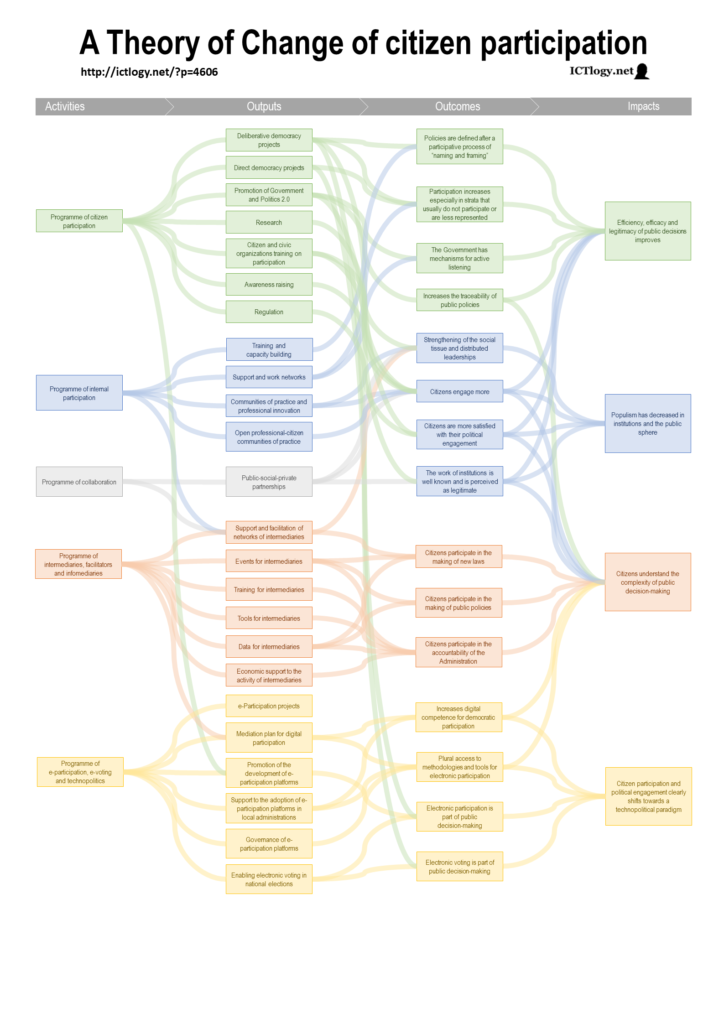The Theory of Change is a methodology for strategic planning for social change. It is based on a reverse engineering process: once the systemic changes are stated, the process goes backwards to identify what outcomes are related to these systemic changes, what outputs (products, services) lead to these outcomes, and what activities or groups of activities (programmes, resources, etc.) have to be deployed to create these outputs.
What follows is a Theory of Change of citizen participation, in which the engagement of citizens in public decision-making is put at the service of some systemic changes and, reversely, can be fostered through some specific programmes.
The expected impacts, featured on the right side of the scheme above, are:
- Efficiency, efficacy and legitimacy of public decisions improves.
- Populism has decreased in institutions and the public sphere.
- Citizens understand the complexity of public decision-making.
- Citizen participation and political engagement clearly shifts towards a technopolitical paradigm.
The first expected outcome is pretty straightforward and is usually the expected outcome of any citizen participation policy. Second and third are, indeed, the two sides of the same coin, and are related with the quality of democracy in particular and social cohesion in general. The last one, more instrumental, aims at embedding technology not as a mere tool, but as the driver of a deep transformation in how people collaborate with each other and with the Administration: from an institution-centred and hierarchy-articulated collaboration to a people-centred and network articulated collaboration; or, in other words, from centralised to distributed decision-making.
The Theory of Change ends up with —or begins with, depending on how one sees it— five main programmes:
- Programme of citizen participation.
- Programme of internal participation.
- Programme of collaboration.
- Programme of intermediaries, facilitators and infomediaries.
- Programme of e-participation, e-voting and technopolitics.
The first one is the traditional ones: make citizens participate. The second one aims at transforming institutions with the same philosophy: let public servants and politicians participate, work together, open up to the citizens. The third one is putting together the former two: let us see what happens when participation takes place between the two spheres. The fourth one aims at addressing the “industrial sector” of participation, but with a hint: it is not about the firms that facilitate projects, but about the collectives that do, as increasingly it is the organised civil society that engages itself in this kind of facilitation: data and research journalists, activists, hackers, social movements, etc. Last, the fifth one is an explicit support to participation infrastructures, including technology but also the methodologies that are embedded in these technologies.
As this is a draft, a work in progress, comments are more than welcome.
